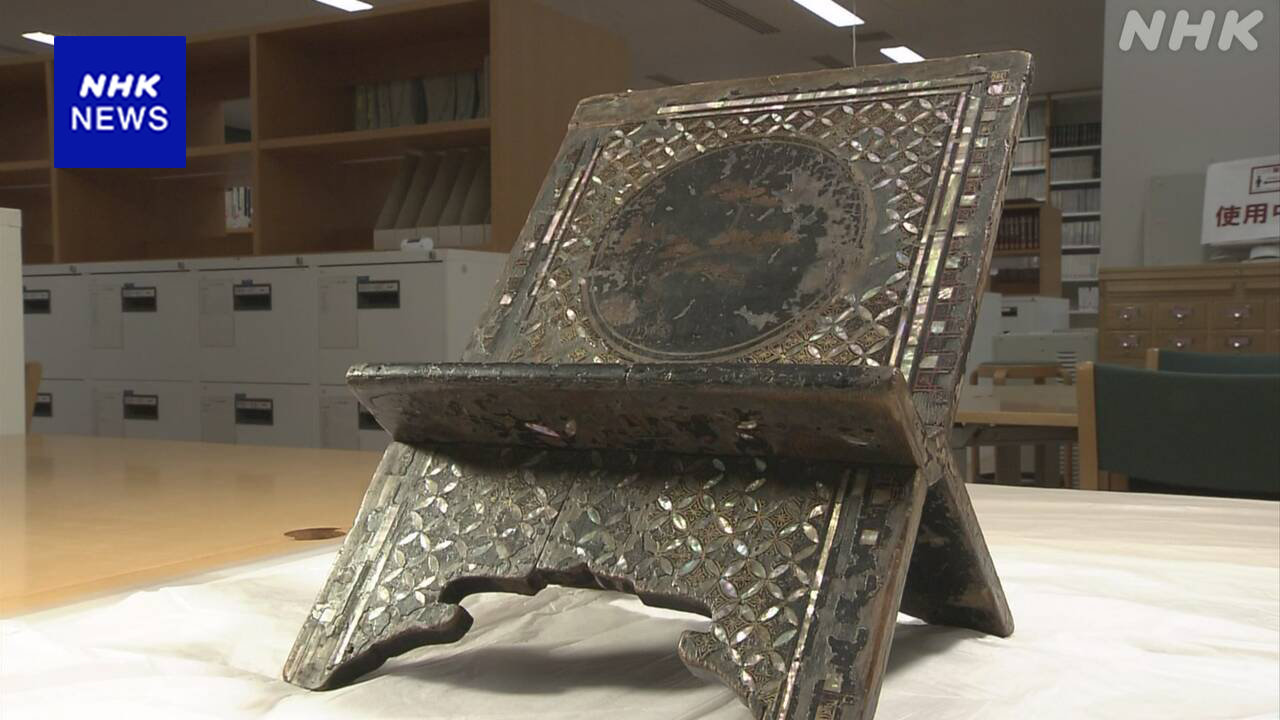A "lectern" for reading the Bible, made in Japan about 400 years ago and made of Nanban lacquerware, was recently discovered in Portugal. There are traces of crosses and other decorations that appear to have been removed, and the site is attracting attention as a valuable document that reveals the feelings of people at the time who feared the oppression of Christianity.
This lectern, found in Portugal, is entirely painted in black lacquer, with a pine tree depicted in the center, and the periphery is studded with shellwork.
According to Koji Kobayashi, a specially appointed researcher at the Tokyo National Research Institute for Cultural Properties, who conducted the investigation, this lectern was used for reading the Bible, and its design led to Portuguese and Spanish craftsmen having Japanese craftsmen make it in the early Edo period. It is considered to be one of the Nanban lacquerware that was passed over the world.
However, this means that there are no designs indicating Christianity, such as the cross or the letters "IHS" representing Jesus Christ, which are present on almost all lecterns confirmed so far.
When Kobayashi and his colleagues took an X-ray, they found marks that appeared to have been peeled off from something under the pine tree, which they confirmed were parts of a cross and the letters "IHS."
The lectern was made at a time when the Shogunate was intensifying its oppression of Christianity, and it is thought that the lectern was sent to Japan with all religious overtones removed to avoid being exposed.
Specially Appointed Researcher Kobayashi said, ``Instead of just painting on top, they removed the shells to completely hide what had happened, and this is a valuable document that shows the feelings of people at the time who were afraid of religious oppression.'' "It's true," he says.

